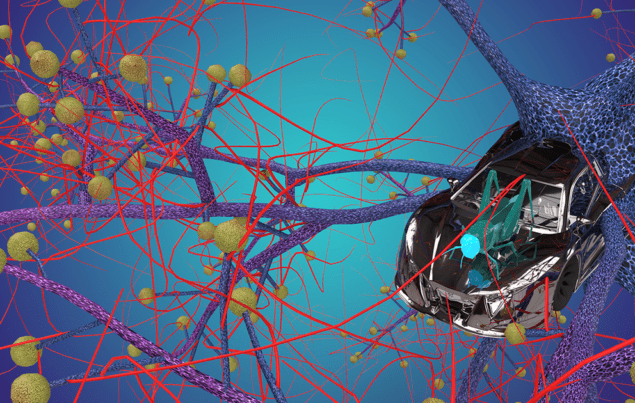
A new collision detector that mimics the neurological mechanisms that stops swarming locusts from crashing into each other has been developed by Saptarshi Das at Pennsylvania State University and colleagues. The team’s compact, low-power device could lead to a boost in efficiency for collision detection mechanisms in robots and autonomous vehicles.
Today’s most advanced robots can safely navigate through unfamiliar environments using algorithms that allow them to avoid collisions with surrounding objects. These algorithms can be used for general, non-specific purposes, but this makes them computationally expensive – meaning their hardware requires large energy budgets and spatial footprints. In their study, Das’ team investigated whether navigation could be achieved using more task-specific algorithms.
The researchers turn to the tried-and-tested method of seeking inspiration from nature. In this case, they considered swarms of locusts, which are best known for the widespread devastation they can unleash on crops. The insects fly in dense groups containing millions of individuals, but very rarely collide with each other. This requires individual locusts to carry out complex mathematical calculations in real time, despite their extremely limited brain sizes.
Specialized neuron
Locusts make up for their lack of brain power with a single specialized neuron named the “lobula giant movement detector” (LGMD), which operates using two visual stimuli: the angular sizes and relative angular velocities of approaching insects. The resulting firing frequency of the neuron peaks immediately before collision, driving the locust to change direction.
To mimic this behaviour, Das’ team started from an equation linking the stimuli with the LGMD’s time-varying firing rate. They then incorporated this mathematics into a device containing a molybdenum disulphide monolayer, stacked on top of a programable memory architecture. While the photoconductor increased the device’s current as objects approached, introducing an “excitatory” signal, the architecture underneath decreased its current when no visual stimuli were present – creating an “inhibitory” signal. The signals competed with each other, with the excitatory signal winning out immediately before a collision – creating a signal spike.

Sounding out swarms
Like the LGMD, the team’s device consumes a tiny amount of energy (just a few nanojoules) and occupies a modest spatial footprint of just 1×5 µm. At the same time, it can identify potential collisions from a variety of objects, approaching at a range of different speeds with an efficiency that is lacking in current general-purpose devices.
Das and colleagues now hope to extend the responses of their device beyond head-on collisions, and to incorporate multi-pixel detectors for predicting collisions in 3D. Through these improvements, their technology could be an important step towards safe, affordable autonomous vehicles, and robotics applications including manufacturing and medical surgery.
The detector is described in Nature Electronics.



